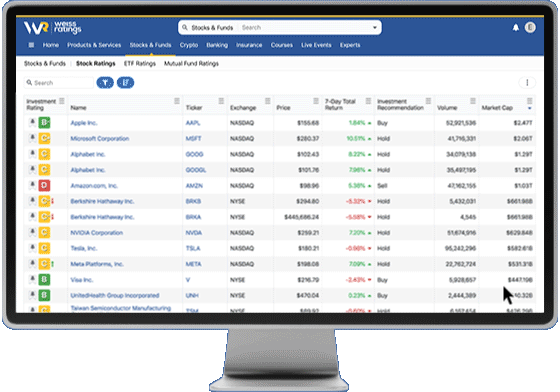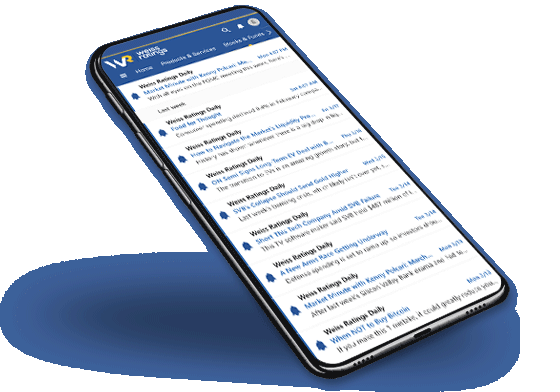FREE ACCOUNT SIGN UP
50+ Years of Accuracy for Investors
Should you buy or sell? Get the answer with our Investor Ratings for 53,000+ stocks, ETFs, cryptos and more. We compile the most thorough research on key factors so you don't have to.

ALERTS & NOTIFICATIONS
Never Miss Another Timely Opportunity
Subscribe now to get up-to-the-minute alerts on your favorite stocks, cryptos and critical market news. From big shifts to hidden gems — we'll bring them to your attention at the right time.

EXPERT INVESTMENT INSIGHTS
Join 200,000+ Savvy Subscribers
Whether the markets are bearish or bullish, we've got you covered. Get our free daily briefings on the traditional and crypto markets with Weiss Ratings Daily and Weiss Crypto Daily.

HONEST & ACCURATE
100% Unbiased Market Intelligence
Unlike other ratings agencies, we never have and never will accept a dime from any company we review. Just pure, unbiased research for investors with zero conflicts of interest.



